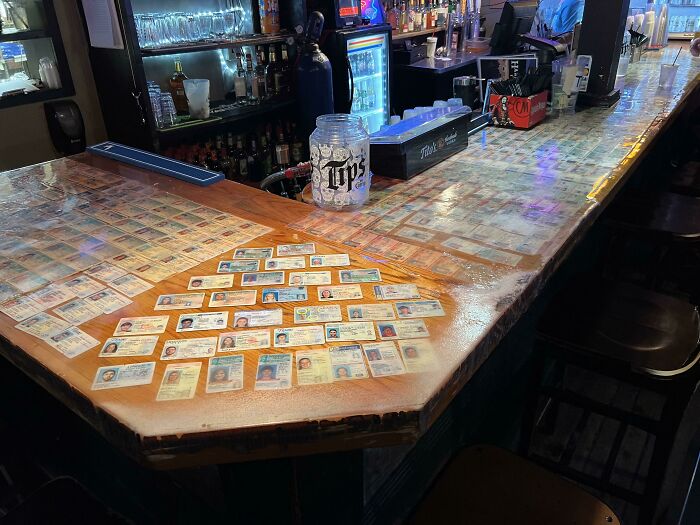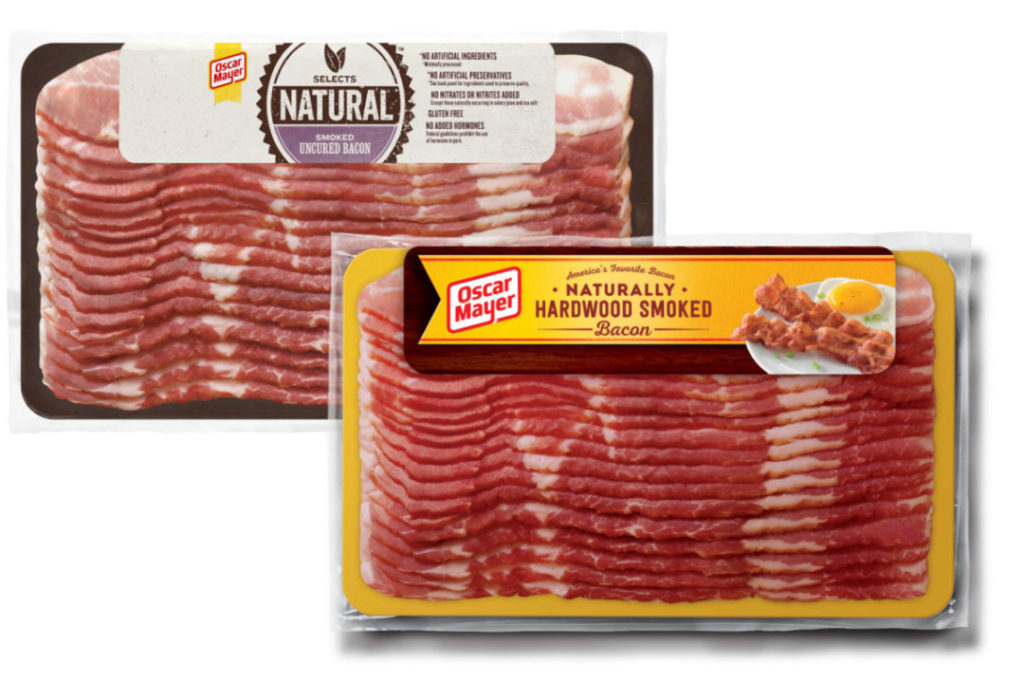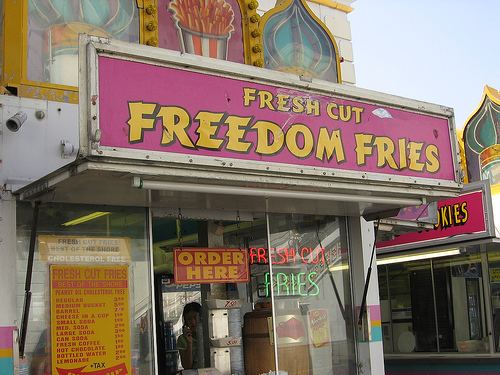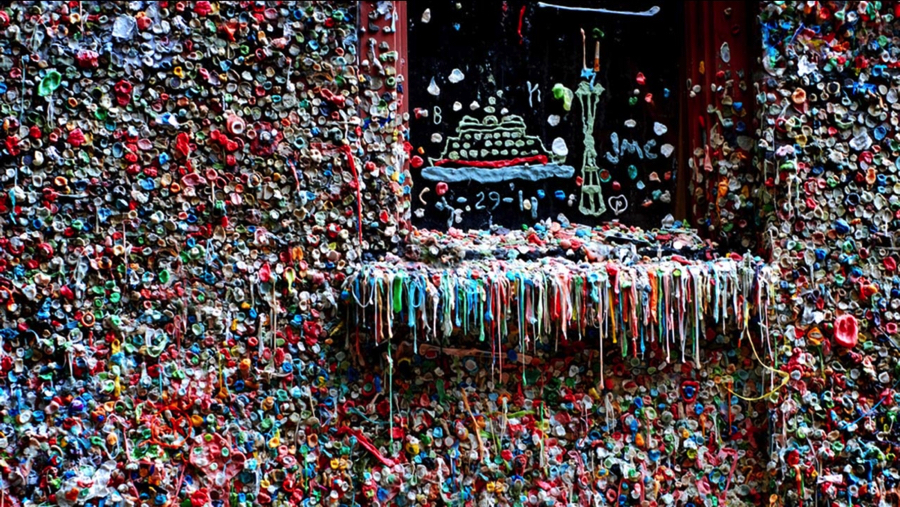HOW DO YOU GET RID OF STYROFOAM PACKAGING?
One of the questions that I often get from new tenants at the start of the school year is: “How do I get rid of styrofoam?” A lot of the products that students buy when they move to college towns come packed in styrofoam. First, let me tell you what you shouldn’t do with it. Don’t put styrofoam in your recycling can. Styrofoam is on the short list of plastic products that the city doesn’t recycle. There are 2 kinds of styrofoam, molded blocks and shipping pellets or ‘peanuts’. There is nothing you can do with molded blocks of styrofoam except put them in your regular garbage can. Although shipping pellets cannot be recycled, they can be reused. When I get styrofoam pellets in a parcel, I save them in a kitchen trash bag, and when the bag is full, I take it to a FedEx or UPS shipping store. They are always happy to take and reuse them. It saves them money. Be sure that the pellets are clean, and that there is nothing else in the bag. Always bag styrofoam pellets. Never put loose styrofoam pellets in your garbage can. If they get loose when the garbage collectors dump the can, they can blow all over the neighborhood. Below is a photo taken at the back door of the Tsukiji wholesale fish market in Tokyo. On some days, the styrofoam piles are twice this high.

FAKE I.D.s
The photo below is of a bar in a college town (not Berkeley) where the owner has decorated the top of the bar with fake I.D.s confiscated from college students. In 1984, Congress passed a law making the drinking age 21 nationally. Prior to that, states had different drinking ages. When I went to the University of Maryland, the drinking age in Maryland was 21. However, in Washington, D.C., 6 miles away, the drinking age for hard liquor was 21, and the drinking age for beer was 18. Every Friday night, a caravan of cars left the University of Maryland headed for bars and nightclubs around Georgetown University and American University in D.C. Carloads of students from other colleges in southern Maryland and northern Virginia also headed for those same bars. Most of these bars and nightclubs disappeared quickly after Congress raised the drinking age nationally to 21. I have always thought it was madness to expect college students to wait until their 21st birthday before drinking their first beer.

MORE OF MARK’S KITCHEN TIPS – BACON.
CURED VS. UNCURED BACON. What is the difference between cured and uncured bacon? You probably assumed that the answer is that cured bacon is cured, and uncured bacon is uncured, but if you did, you were wrong. The answer is that they are both cured. How can that be? First, you need to remember that the word ‘cured’ has 2 very different definitions. ‘Cured’ can mean that an animal was sick but now is well, but ‘cured’ can also mean that meat was preserved by any of a variety of methods, including salting, drying, or smoking. Cured bacon is not bacon that came from a pig that was sick but is now well. ‘Cured’ simply means that the bacon was preserved. The difference is this. Regular cured bacon is bacon that was cured with chemically produced nitrate. Uncured bacon is bacon that was cured with nitrate from a natural source, usually an extract of celery. So, both ‘cured’ and ‘uncured’ bacon are cured. They are nutritionally the same, and they taste the same. Uncured bacon usually costs more than cured bacon, but is it worth the extra money? I don’t think so. I think that labeling bacon as ‘uncured’ is just a marketing gimmick to get a higher price for the product by making the bacon appear to be natural and healthier.
OSCAR MAYER. Oscar Mayer made a fortune on bacon. He came up with the idea of selling pre-sliced bacon and with the slices shingled on a piece of cardboard. Before that, when you went to a butcher shop to buy bacon, you got a block of bacon that you had to slice at home; however, it is very hard to cut bacon into thin even slices without a slicing machine. By the time Oscar Mayer’s competitors realized that consumers were willing to pay more for pre-sliced bacon, Oscar Mayer had cornered the market.

KOSHER HOT DOGS. People have always been suspicious about what goes into hot dogs. Perhaps that explains why so many people buy kosher hot dogs. Over 60% of all kosher hot dogs sold in the United States are purchased by non-Jews even though only 2% of Americans are Jews, and most of them do not keep kosher. Kosher meat inspectors are much tougher than government food inspectors, and a lot of people seem to know that. Blood and a long list of animal parts that go into regular hot dogs cannot go into kosher hot dogs. (I am not going to tell you what those animal parts are. It’s too disturbing.)
HOT DOGS AND ANTI-GERMAN HYSTERIA. Prior to 1917, hot dogs were called ‘frankfurters’ or ‘franks’ in the United States, but during World War 1, the U.S. government banned a long list of German words including ‘frankfurter.’ The government recommended that people call them ‘hot dogs’ instead, and the term stuck. Other words banned by the government during World War 1 included: hamburger, sauerkraut, German shepherd, kaput, kaiser roll, and dachshund. Some dachshund owners had their dogs euthanized out of fear for their safety. In 1918, the California legislature passed a law banning the teaching of German in public schools, declaring that German is “a language that disseminates the ideas of autocracy, brutality, and hatred.” California ordered schools to stop using the word ‘kindergarten’ and to scratch the word ‘Fahrenheit’ off of classroom thermometers. This may seem silly today, but people took this anti-German hysteria very seriously during World War 1.

FRENCH FRIES AND ANTI-FRENCH HYSTERIA. In 2003, the U.S. was gripped by anti-French hysteria that was reminiscent of the anti-German hysteria of World War 1. It was triggered by French opposition to the War in Iraq. President George Bush claimed that Saddam Hussein had chemical and biological weapons and was developing nuclear weapons. Among major Western countries, only France voted against the war at the U.N. Jacques Chirac, the president of France, said that his intelligence service concluded that Iraq did not have these weapons and wanted to see Bush’s evidence, but Bush refused to produce any evidence. Anti-French hysteria ran wild in the U.S. Restaurants renamed french fries ‘freedom fries’ and french toast ‘freedom toast’ on their menus. Newspapers removed French accent marks from words like entrée and soufflé. A chain of stores in California’s central valley named ‘French Dry Cleaners’ were all vandalized or firebombed. The real estate firm where I worked at the time stopped using the terms ‘french doors’, ‘french drains’, and ‘facade’ in our ads. The hysteria ended after the U.S. invaded Iraq and discovered that the French were right. No weapons of mass destruction were found in Iraq. It turned out that President Bush had been lying. There was no evidence that these weapons existed.

THE WORST TOURIST ATTRACTION IN THE STATE OF WASHINGTON. I am thinking about covering all 50 states.
The Seattle Gum Wall. There are a lot of interesting places to see in and around Pikes Market in Seattle and a lot of good food there too. However, more people go to see the gum wall than any store or restaurant at Pikes Market. Sticking used chewing gum on the back wall of the Market Theater on Post Alley has been a Seattle tradition for decades. In 2015, the city removed over 2,000 pounds of used chewing gum from the wall. They did this because the sugar in the gum was eroding the bricks and mortar in the wall, but more gum appears on the wall every day. This job is now done by steam cleaners in haz-mat suits. The gum is several inches thick and extends 15 feet high in places. Strangely, the gum wall is a popular site for wedding photos. It is not illegal to put gum on the wall, but the health department advises against touching it; however, you can find photos on Google of people licking the wall. What could they be thinking? If you want to visit the gum wall, I recommend that you do that in cold weather. I went there on a hot summer day, and the stench in this narrow alley was just unbearable. There may be a more disgusting and unsanitary tourist attraction in Washington state, but what could it be?

MY ‘TENANT NEWSLETTER’ IS NOW JUST MY ‘NEWSLETTER’.
You may have noticed that I have dropped the word ‘tenant’ from the name of my newsletter. Over 95% of the people on my mailing list are either former tenants or people who were never tenants of mine, so it seemed time to do it.
COMMENTS? If you want to comment on any article in this newsletter, you can do so at: Mark Tarses Blog
